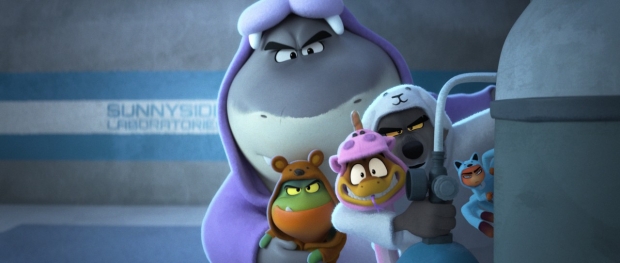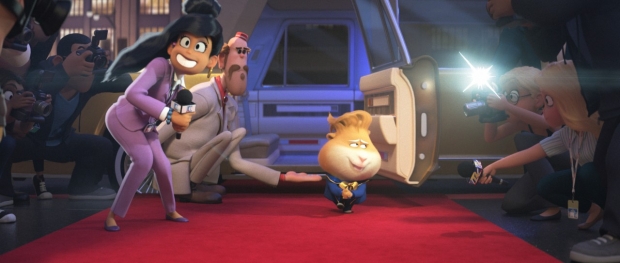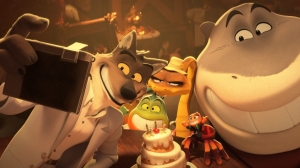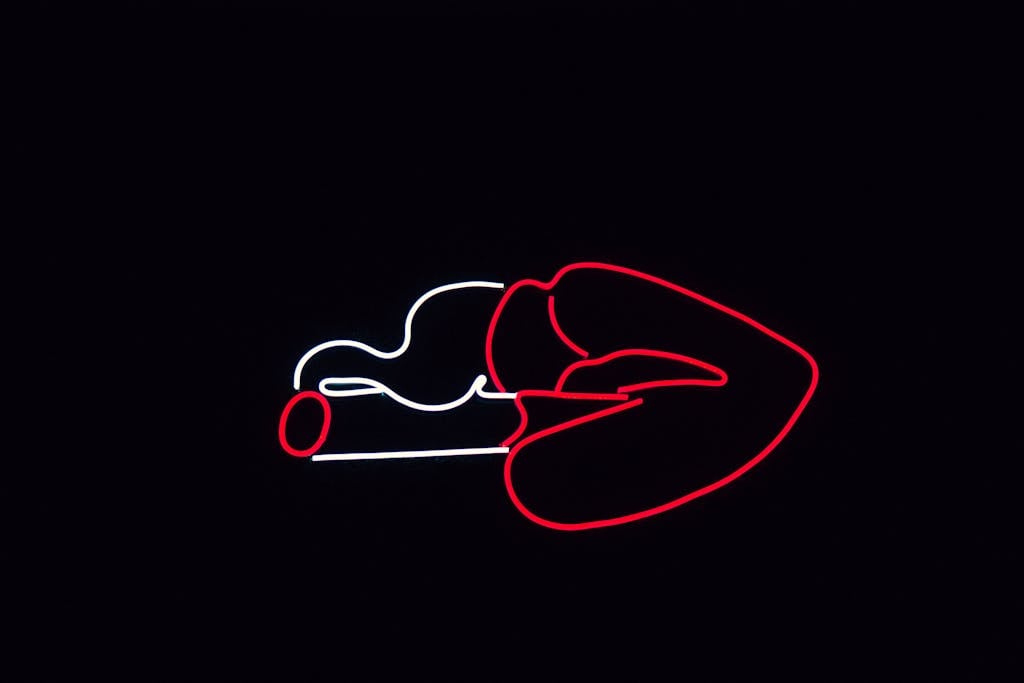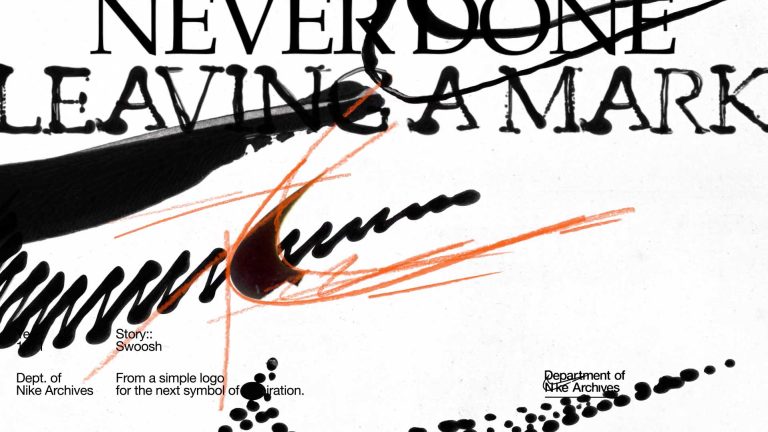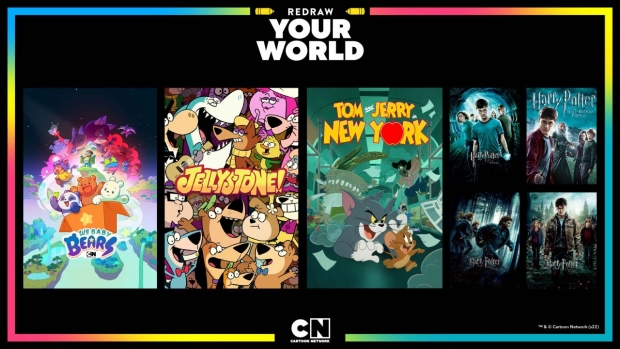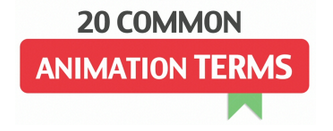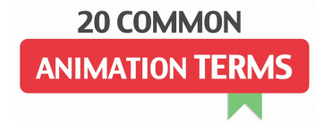DR: I first heard about the book online. Then I went to the author’s website, saw the cover, and it just popped for me. Even on the author’s website, it said it was “Madagascar meets Tarantino,” and my eyes lit up. And it had a great title. Then I actually got a copy and read it. Sometimes you have a great title, great imagery, but the story just isn’t there. But this book was better than I could have imagined. It was exactly the tone and sensibility that I love. And it really delivered on its premise, and the characters were just rich and incredibly fun. It checked all the boxes for me.
AWN: Pierre, you’ve worked in a variety of roles on a lot of great animated projects at DreamWorks. How did that experience help you in directing your first feature?
AWN: You recorded much of the voice acting as an ensemble, rather than individually. How much did that dynamic affect the performances, and what do you think it brought to the film that you might not have gotten if it was done in the traditional way of one at a time?
What do you get when you combine the voice talents of Awkwafina, Marc Maron, Craig Robinson, Sam Rockwell, and Anthony Ramos with a blockbuster Scholastic book series (aside from a highly unlikely juxtaposition of dramaturgical elements)?
PP: No, there was no pressure whatsoever. It was just us.
PP: Then when the other project got put on hold, it left me with a few months to experiment. And the one thing that I jumped right back into was Bad Guys. In the meantime, Damon and I had created a strong relationship, so we were like, let’s do this thing together.
PP: Yes, it did. For example, we have a ray-tracing renderer at the studio that we started using for Dragon 2, I think, that makes the lighting and the visuals look realistic. So we had to fight the computer a little bit to make it less realistic. Our teams are trained to create particular simulation effects, and I was asking them to do 2D hand-drawn animation effects, more pose-to-pose cartoony. But even in the posing, it was supposed to be more a Miyazaki style than, for instance, a Disney style of posing. So the teams had to deconstruct and relearn the way they did things.
AWN: There’s been great success recently with films that have employed non-traditional, integrated 2D/3D styles. Was there any pressure to make this film look different, or was that something that you decided based on your own sensibilities and where you wanted to take it?
You get The Bad Guys, the new CG action comedy from DreamWorks Animation, based on the New York Times best-selling series by Aaron Blabey. A crackerjack crew of animal outlaws – pickpocket Mr. Wolf (Rockwell), safecracker Mr. Snake (Maron), master-of-disguise Mr. Shark (Robinson), “muscle” Mr. Piranha (Ramos), and hacker Ms. Tarantula (Awkwafina) – have been among the world’s most-wanted criminals for years. But when the gang is finally caught, in order to avoid prison, they set out to fool the world into believing that they’ve changed their ways. However, this ruse takes an unexpected turn when they discover that being good really isn’t all that bad, and they’re faced with an unexpected opportunity when a new villain threatens the city.
AWN: What drew all of you to this project and what sparked the visual direction that you ultimately took?
Damon Ross: I still have it. It has a little coffee stain on it, but it’s memorabilia for sure.
In a freewheeling group interview, director Perifel and producers Damon Ross and Rebecca Huntley talked about the genesis and production of the film, the breakthrough in visual design, and, in general, the good time they had making The Bad Guys.
Dan Sarto is Publisher and Editor-in-Chief of Animation World Network.
Helmed by veteran animator and Annie Award winner Pierre Perifel in his feature directing debut, The Bad Guys uses notable Los Angeles neighborhoods and landmarks as visual references and for inspiration. Notably, the film boasts a more stylized, hybrid design than past DreamWorks productions, a creative option made possible in part by the success of Sony Pictures Animation’s Spider-Man: Into the Spider-Verse. With a Rotten Tomatoes approval rating of 87% and a worldwide gross of over 0 million to date, The Bad Guys may reasonably be considered a significant critical and commercial success.
DR: And specifically because they are these predatory creatures, who are thought of as monsters by society, we had to find the humanistic elements, find their inner vulnerabilities, so that they were appealing and charming at the same time they were sort of terrifying. We also made a conscious choice – it wasn’t in the original script, but evolved in later drafts – to depart from the book slightly by making it a kind of human/animal hybrid universe. It’s something that’s different and might be a little confusing at first, but we commit to the concept pretty early and I think most audiences just go along with it.
AWN: One of DreamWorks’ historical strengths is animal characters. What’s different about these characters and the way that you developed them, compared to how DreamWorks has approached key animal characters in the past?
Pierre Perifel: I’ve been working for 15 years at DreamWorks as an animator, supervising animator, and head of animation, as well as on storyboards and character design. They all allowed me to look at the production from different angles and sharpen my skillset. What it mostly did was allow me to get to know the teams – producers, production teams, creative teams – really well. So I have great communication with everybody, and there’s a trust that has been established. It helped me to get through the actual production of the film really smoothly.
Rebecca Huntley: When I came to it, these guys had already been on it for a while. And when I met with them, we already had the story, the script was there. And it was a really fun, exciting story that just drew you in. The idea that we could make a heist movie for a family audience was super appealing, and then talking with them about how we could create a stylistically different-looking movie was also super appealing. So I felt like we had this great story, with the opportunity to make a movie that looks and feels different than things we’ve done in the past.
PP: Damon and I were working together on another project, and he had the first book of The Bad Guys on his desk. And I was like, “My god, what is this? It’s so cool.” And I immediately knew what I wanted to do with it. So I came back with this quick sketch, and Damon really liked it.
DR: Sam Rockwell, in particular, right at the beginning of the process, asked if we could do it. And we were already thinking, “God, we’d love to do that.” I’d worked on another project where we did a table read before we started production, and then basically did a radio play version, a story reel based on the radio play. And you get these naturalistic, authentic kinds of interactions. There are also times when they just riff and go off script. And it’s in those moments that you find some real gold, and the believability of the scene just skyrockets.
RH: I just wanted to say that those are the kind of challenges our team embraces. They actually find them quite exciting. And we always approached everything with the “how”: Okay, here’s what we need to do. How are we going to do it? We even had a position on our film, which was “head of look.” Jeff Budsberg actually focused on many of our challenges in the look of the movie and helped us with the how of it all.
AWN: Can you say a little more about where you found your inspiration for the look of the film and what you were trying to achieve?
PP: From the beginning, we were trying to capture the coolness of the gang, Mr. Wolf in particular. But the big thing was really to make sure that these characters represented human fears that we project onto these animals. The rest of the world in the film is human. And so the main characters had to be animalistic, but at the same time still very humanized.
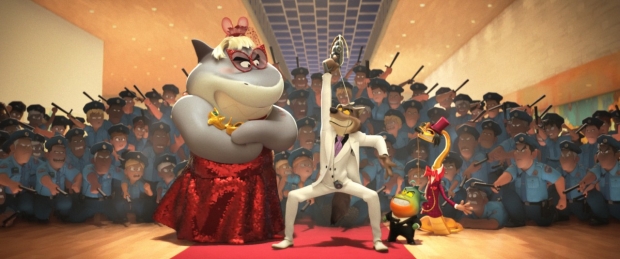
AWN: Did that lead to any significant production challenges you might not have faced if you had utilized a more traditional CG production pipeline?
PP: It was something that I’d been wanting to explore for a long time and never had the chance to do because I was never in this position. It’s influenced a lot by my own education in visual arts growing up in France, as well as the French graphic novel scene and French animation, especially smaller independent films. Oftentimes those are 2D movies.

PP: It’s incredibly organic for the performers just to be together. I mean, that’s what they do on live-action sets. And the idea was to try to allow for a greater flow in the sequences and in the way they act out their characters. We couldn’t actually assemble the whole cast – it was mostly duos and trios. It’s not done often, as you know, because it’s very complex for the editorial team to separate those takes. But we wanted to do that from the beginning, and COVID was our saving grace here. With everybody in their own separate rooms, it was easy to have virtual recording sessions where they could interact and overlap.
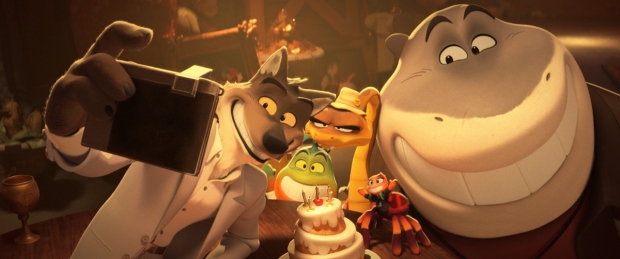
RH: Actually, it was liberating that we weren’t trying to strive for anything in particular, that Pierre had an idea where he wanted to go, and it was a path of exploration and figuring it out together.
France is also at the convergence of so many influences – not just European culture, but also anime and manga culture big time. It’s that melting pot that I grew up with. And so you’ll find some Miyazaki and some Cowboy Bebop, as well as Akira Toriyama, the creator of Dragon Ball. And definitely some influences from American animation, which I always loved. So all of that comes together to give the movie its own stylized look that you haven’t really seen before.
